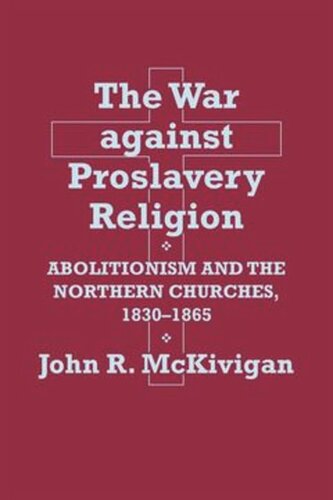

Most ebook files are in PDF format, so you can easily read them using various software such as Foxit Reader or directly on the Google Chrome browser.
Some ebook files are released by publishers in other formats such as .awz, .mobi, .epub, .fb2, etc. You may need to install specific software to read these formats on mobile/PC, such as Calibre.
Please read the tutorial at this link: https://ebookbell.com/faq
We offer FREE conversion to the popular formats you request; however, this may take some time. Therefore, right after payment, please email us, and we will try to provide the service as quickly as possible.
For some exceptional file formats or broken links (if any), please refrain from opening any disputes. Instead, email us first, and we will try to assist within a maximum of 6 hours.
EbookBell Team

4.0
66 reviewsReflecting a prodigious amount of research in primary and secondary sources, this book examines the efforts of American abolitionists to bring northern religious institutions to the forefront of the antislavery movement.
John R. McKivigan employs both conventional and quantitative historical techniques to assess the positions adopted by various churches in the North during the growing conflict over slavery, and to analyze the stratagems adopted by American abolitionists during the 1840s and 1850s to persuade northern churches to condemn slavery and to endorse emancipation. Working for three decades to gain church support for their crusade, the abolitionists were the first to use many of the tactics of later generations of radicals and reformers who were also attempting to enlist conservative institutions in the struggle for social change.
To correct what he regards to be significant misperceptions concerning church-oriented abolitionism, McKivigan concentrates on the effects of the abolitionists' frequent failures, the division of their movement, and the changes in their attitudes and tactics in dealing with the churches. By examining the pre-Civil War schisms in the Presbyterian, Baptist, and Methodist denominations, he shows why northern religious bodies refused to embrace abolitionism even after the defection of most southern members. He concludes that despite significant antislavery action by a few small denominations, most American churches resisted committing themselves to abolitionist principles and programs before the Civil War.
In a period when attention is again being focused on the role of religious bodies in influencing efforts to solve America's social problems, this book is especially timely.